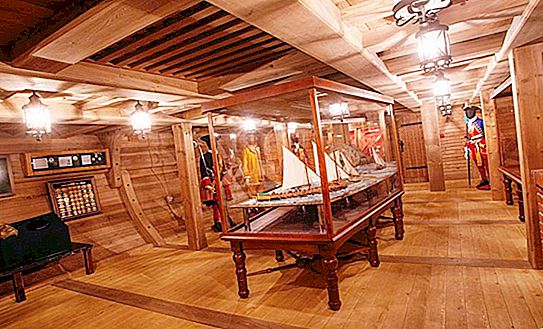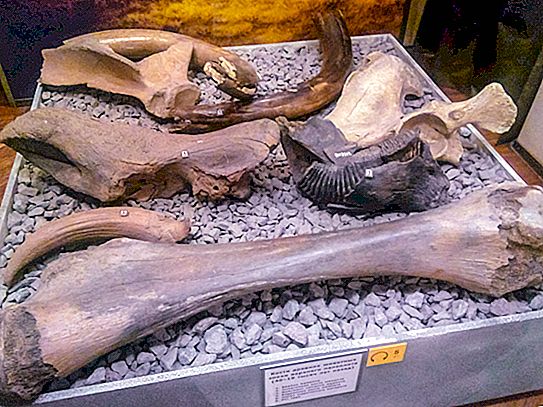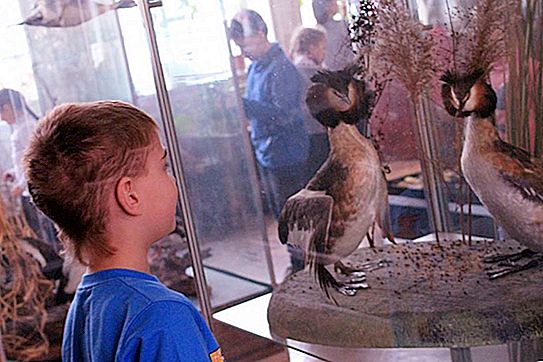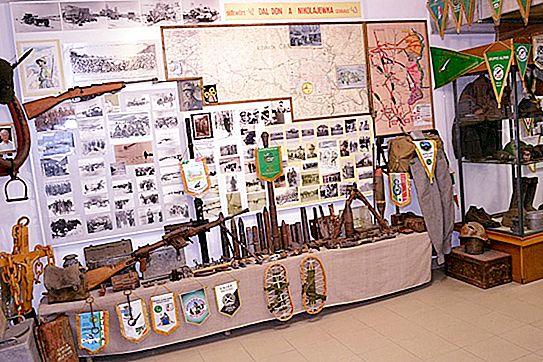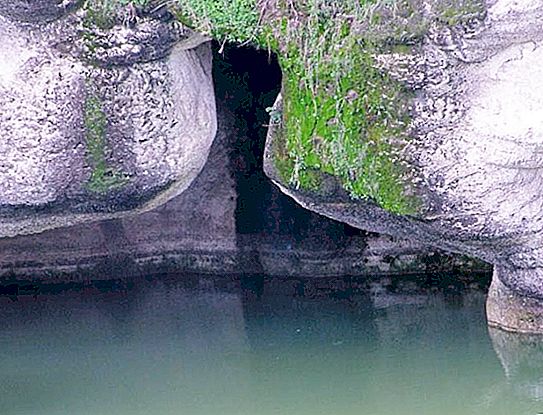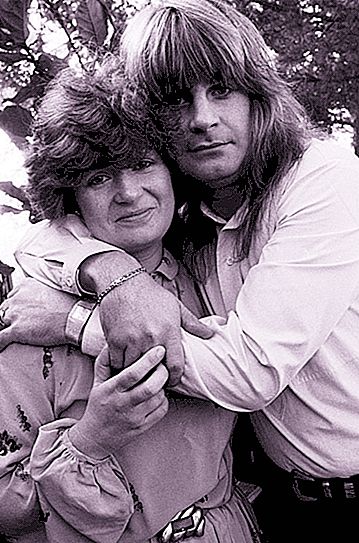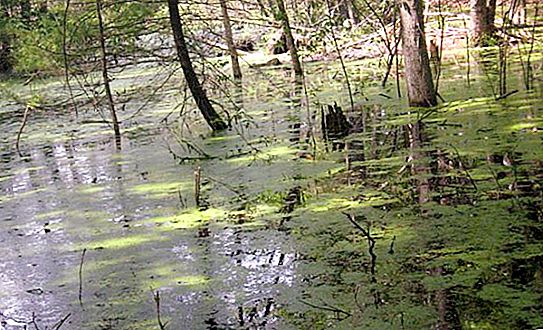The Museum of Local Lore in Voronezh got the opportunity to actively develop thanks to the scientific enthusiasm and active hard work of the first director - Stefan Zverev. A small exhibition, collected by enthusiasts and lovers of antiquity, huddled in several rented rooms. There was practically no prospect of creating a full-fledged collection, but the case helped - at the excavations of the "Private Barrows" in the vicinity of Voronezh, Zverev found a unique silver bowl, moreover, perfectly preserved. The find was presented to Tsar Nicholas II, the gift was received with gratitude, which resulted in a generous response in return - a separate building for the museum.
Museum Formation
The opening of the provincial museum in Voronezh took place almost 125 years ago - in September 1894. At the first stage, three small rooms were allocated for the exposition, the entire collection consisted of donations and consisted of 2, 400 items. Replenishment of funds was a matter of honor, rarities were found through archaeological excavations.
At that time, there were several places around Voronezh that were of great interest to historians - a hillfort near the Divnogorsk monastery, a Khozarsky hillfort, a mound in the village of Mazurki, and Private Mounds. Valuable artifacts were found at each excavation site, one of which contributed to the opening of a new page in the development of the museum.
A silver bowl from the Private Barrows presented to Emperor Nicholas II turned the dreams of the first director Stefan Zverev into reality. For collections, the highest order in 1911 was transferred to the building of the Voronezh Palace.
Times do not choose
The resulting areas were never developed - museum rooms needed redevelopment of the inner rooms. It was started, but the work did not end, global events were to blame - the First World War, the revolution and the ensuing Civil War did not contribute to the development of culture.
After 1917, all the aspirations of the museum staff consisted of only one thing - to save the collections from the estates ruined by historical vortexes. The process of nationalization significantly increased funds by objects of art, art canvases, and various collections. Funds were replenished constantly, but few people saw most of the exhibits. By the beginning of World War II, the Voronezh Regional Museum of Local Lore had a large collection of collections; more than 100 thousand items were in storage.
Military action caused enormous damage to the whole city. Museum workers managed to evacuate only a small part of the property, most of the funds died. The resumption of work began in 1943 in the premises of the Anti-Religious Museum. In 1948, the former building was returned to the institution, but connected to the Art Museum.
House Klochkova
In 1959, the final separation of the two cultural institutions took place, the Voronezh Regional Museum of Local Lore received a permanent place to host the main exhibition - the building on Plekhanovskaya Street, building 29. The house is a historical heritage and architectural value, it was built in the late 19th century by merchant A. Klochkov and included in the ensemble of his country estate.
The building itself was intended to establish a school for blind children in it. A boarding school for children with visual impairments worked in this house until 1941. After the war, it housed the regional executive committee of the city, and from the end of the 50s - the Voronezh Regional Museum of Local Lore.
Description
The Voronezh Regional Museum of Local Lore contains in its structure 3 branches and a separate building of the depository. Today, the museum has about 177 thousand items, of which more than 114 thousand items are in the main fund. More than 2.6 thousand m2 were allocated for permanent exhibitions, temporary exhibitions are exhibited on 175 m2, 1.3 thousand m2 are given for storage of funds. The museum’s asset also includes a park area of 0.3 hectares.
More than 96.5 thousand people visit the expositions of the Voronezh Regional Museum of Local Lore annually. Voronezh is a city where there are many historical places, the flow of tourists from year to year only increases. Employees of the museum of local lore often hold exhibitions, give lectures, conduct educational and publishing activities welcoming the activity of tourists.
Each museum has something to be proud of; in the funds of the Voronezh Regional Museum of Local Lore, the most valuable collections are:
- Ethnographic - more than 89 thousand household items and applied art.
- Philately, bonistics, numismatics - one of the vast collections, where there are more than 35 thousand items.
- Paintings, graphic works, sculpture - about 8 thousand objects.
- The Weapons collection will hold nearly 450 unique pieces.
- A rare book - a collection consists of 5, 992 storage units belonging to different centuries.
Arsenal
Throughout the years of work, not only the museum’s funds increased, but the scope of activity expanded, branches were opened in Voronezh. Voronezh Regional Museum of Local Lore invites residents and visitors to visit all departments. The exposition of each museum reveals individual facets of the history of the region.
Arsenal branch - an exposition dedicated to the Great Patriotic War is deployed here. The building was built in the 18th century and was part of a cloth factory owned by the merchant Gardenin. A warehouse was located here in the 19th century, in the second half of the 19th century the main entrance is decorated with a portico with columns, internal and external reconstruction is carried out.
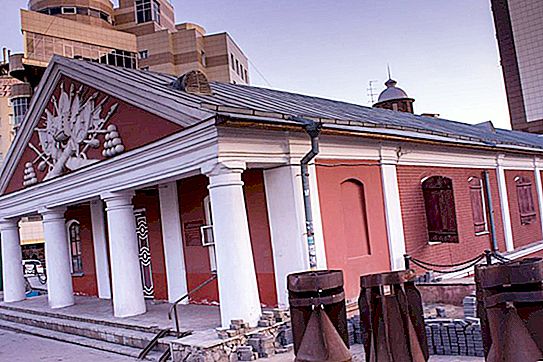
In 1910, the premises began to be used as weapons storage. In 1979, the building was transferred to the disposal of the museum of local lore. The exposition covers the fighting in the Voronezh region and the region, tells the story of the war of 1941-1945. Excursion - a survey of the exposure.
Museum of trainers
The house-museum of A. L. Durov is the most creative and interesting object of the Voronezh Museum of Local Lore. The mansion was built in the 1870s, the Durovs bought it in 1901. The new owner, a well-known circus artist, expanded the house, making significant adjustments to the architecture of the building itself, placing it in a kind of museum. Buildings were added to the main house, which were located on the site with a terrace, they were connected by a white staircase that went down to the river.
At the highest point, at the beginning of the stairs, there was a residential building and a gazebo with an arena for animal training. In the middle of the terrace, the ruins of a medieval castle were built, it was possible to get into it through an underpass. The rooms housed dioramas created by Durov with his own hands; in the lower part of the castle, the owner equipped museum halls, which exhibited collections of paintings, antiques, sculptures, archaeological finds and a collection of ethnographic objects.
The house-museum of Durov was friendly to guests, everyone could visit the museum, and there was something to see - there were 20 sections in the catalog. In the same house, the next star of the dynasty of trainers was born - Teresa Durova. Unfortunately, not everything has been preserved in the estate. In the 30s, wooden pavilions were dismantled, a collection of paintings died in the Great Patriotic War. After it, the remaining park buildings were dismantled. In the 1970s, a partial restoration of the appearance of the estate was carried out, in the 90s a restoration of the house and the park was made.
The emergence of the fleet
The exciting exposition is located in another branch of GBUKVO "Voronezh Regional Museum of Local Lore", it is located on board a working copy of the warship "Goto Predestination". The original was laid by Peter I in November 1698. The construction was carried out for the first time without the participation of foreign experts, the tsar himself took charge of the work and the correctness of their implementation. The ship was launched in April 1700.
A copy was made by 2 companies - the masters of the Pavlovsk Shipyard worked on a metal case, the wooden superstructure was the work of specialists of the Varyag petrozavodsk enterprise. The museum on board the ship was opened on the Day of the Russian Navy - July 27 in 2014. The exposition presents the military equipment of the ship - 58 old cannons on two decks, on the vents are marked with stamps with the year of manufacture - 1700.

Guests in the wardroom are greeted by tsar Pyotr Alekseevich, dioramas with mock-ups of the Voronezh shipyard from the time of the ship’s construction, artistic canvases depicting battles in which the Goto Prestation ship participated are located here.
The interior of the ship looked truly unknown, historians and craftsmen had to rely on the descriptions, drawings and drawings of other ships of the same period. They say that everything was completely successful and looks luxurious. Not only the basic parameters of the ship are observed, but also the rigging, and all the smallest details of the ship.
Of interest are household items of sailors and officers - all the rarities presented are originals. You can get to the museum from Wednesday to Sunday, tickets are purchased only on the day of the tour, there is no pre-sale, an advance appointment is required to organize the tour on a certain day.
